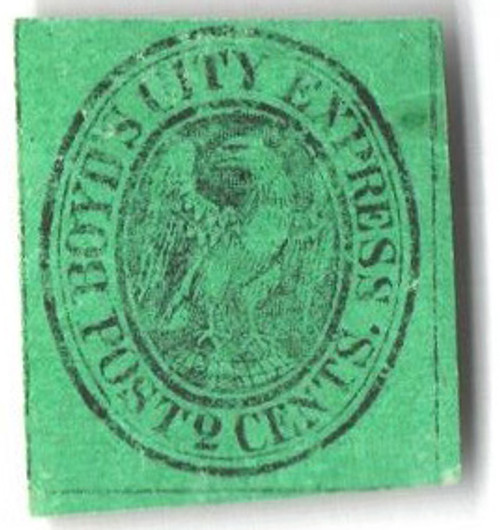
# 20L7 - 1848 2c black green
Own Boyd’s City Express Local Stamp –
Missing from Most Collections
Local stamps are a neat corner of philatelic history. They’re stamps that were issued by local posts (for city delivery), independent mail routes and services, express companies, and other private posts that competed with or supplemented official government services.
Boyd’s City Express Post
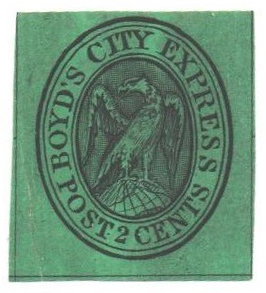
On June 17, 1844, Boyd’s City Express Post, one of the first local posts in the US, opened in New York City.
John T. Boyd created the post and the initial office was located at 45 William Street, next to Wall Street, in downtown Manhattan. When he first opened, Boyd offered two deliveries every day – one at 9 am and one at 3 pm, for 2¢ up to 26th street, 3¢ to Brooklyn, or for free if sending a letter to a newspaper.
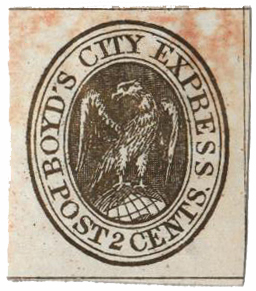
Boyd delivered mail for independent mail companies such as the American Letter Mail Company and Well’s Letter Express, among others. When he first opened, he advertised that he had 20 collecting stations (most likely mailboxes) for mailers to drop off their letters. During that first year, Boyd delivered mail from out of town. But in 1845, an act of Congress prohibited the delivery of mail between cities unless carried out by postal workers or contractors. In spite of this, Boyd continued to deliver the mail within the city.
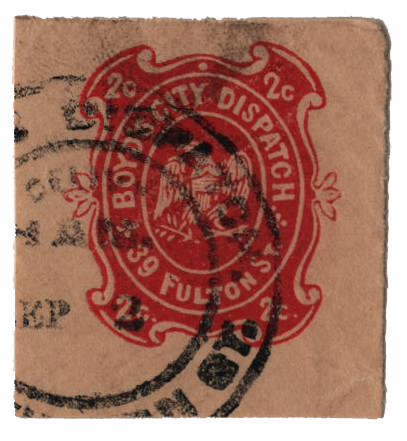
By 1846, other posts had opened in the city and the government’s City Dispatch was losing business and ended up closing. Three years later, the government made another attempt to offer city delivery and created 25 letter deposit stations with four collections and deliveries every day. In response, Boyd claimed he had more than 1,000 collections boxes, with one on almost every block below 50thstreet.
Also in 1849, Boyd took a major step forward by creating die-cut stamps. Though they cost a little bit more than the regular stamps, they were popular with businesses because the stamps were quicker and easier to separate.
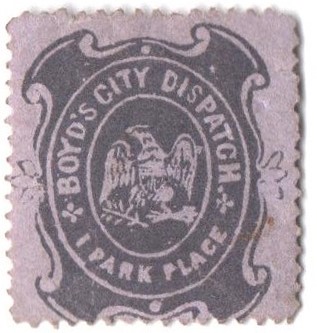
As Boyd’s business grew, the government attempted to take control of local delivery again in 1851 with the passage of a new law that declared New York City streets to be postal routes. Boyd refused to back down and continued to operate his business.
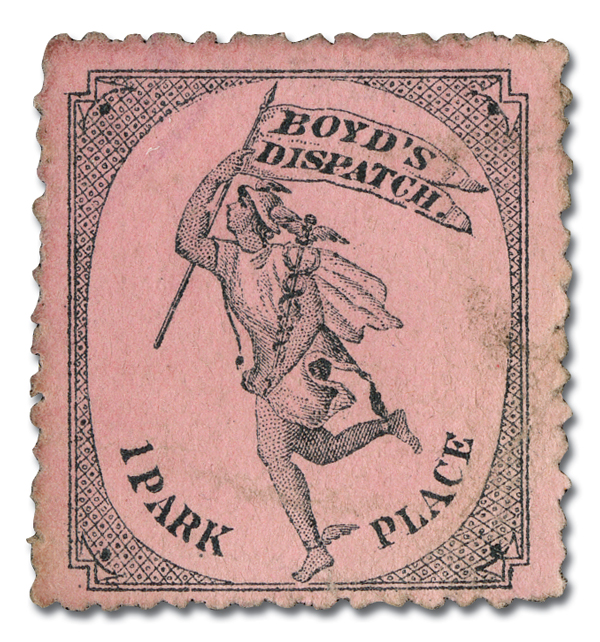
After Boyd died in 1859, his 17-year-old son took over the business. A new postmaster general took office the same year and set out to close down private posts. He created new locked mailboxes and suggested Congress get rid of the drop letter rate for people that used their post office. Boyd’s son then reduced his rate to 1¢ for all classes of mail.
However, the following year, Boyd’s son decided to sell the business to William and Mary Blackham. They reinstated the 2¢ rate but offered a 1¢ rate for letters going to post office. The Blackhams focused on the bulk collection and delivery of circulars, bills, notices, and pamphlets. They also started keeping address lists and produced their first stamped envelopes in 1864.
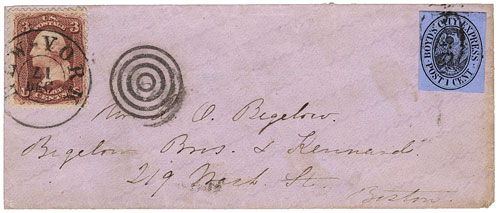
On May 4, 1883, Boyd’s was raided by government officials, but they continued to deliver the mail until 1885. After that, they turned to creating and selling mailing lists and address labels.
Click here for more Boyd’s stamps as well as other Local stamps.
Own Boyd’s City Express Local Stamp –
Missing from Most Collections
Local stamps are a neat corner of philatelic history. They’re stamps that were issued by local posts (for city delivery), independent mail routes and services, express companies, and other private posts that competed with or supplemented official government services.
Boyd’s City Express Post

On June 17, 1844, Boyd’s City Express Post, one of the first local posts in the US, opened in New York City.
John T. Boyd created the post and the initial office was located at 45 William Street, next to Wall Street, in downtown Manhattan. When he first opened, Boyd offered two deliveries every day – one at 9 am and one at 3 pm, for 2¢ up to 26th street, 3¢ to Brooklyn, or for free if sending a letter to a newspaper.

Boyd delivered mail for independent mail companies such as the American Letter Mail Company and Well’s Letter Express, among others. When he first opened, he advertised that he had 20 collecting stations (most likely mailboxes) for mailers to drop off their letters. During that first year, Boyd delivered mail from out of town. But in 1845, an act of Congress prohibited the delivery of mail between cities unless carried out by postal workers or contractors. In spite of this, Boyd continued to deliver the mail within the city.

By 1846, other posts had opened in the city and the government’s City Dispatch was losing business and ended up closing. Three years later, the government made another attempt to offer city delivery and created 25 letter deposit stations with four collections and deliveries every day. In response, Boyd claimed he had more than 1,000 collections boxes, with one on almost every block below 50thstreet.
Also in 1849, Boyd took a major step forward by creating die-cut stamps. Though they cost a little bit more than the regular stamps, they were popular with businesses because the stamps were quicker and easier to separate.

As Boyd’s business grew, the government attempted to take control of local delivery again in 1851 with the passage of a new law that declared New York City streets to be postal routes. Boyd refused to back down and continued to operate his business.

After Boyd died in 1859, his 17-year-old son took over the business. A new postmaster general took office the same year and set out to close down private posts. He created new locked mailboxes and suggested Congress get rid of the drop letter rate for people that used their post office. Boyd’s son then reduced his rate to 1¢ for all classes of mail.
However, the following year, Boyd’s son decided to sell the business to William and Mary Blackham. They reinstated the 2¢ rate but offered a 1¢ rate for letters going to post office. The Blackhams focused on the bulk collection and delivery of circulars, bills, notices, and pamphlets. They also started keeping address lists and produced their first stamped envelopes in 1864.

On May 4, 1883, Boyd’s was raided by government officials, but they continued to deliver the mail until 1885. After that, they turned to creating and selling mailing lists and address labels.
Click here for more Boyd’s stamps as well as other Local stamps.








